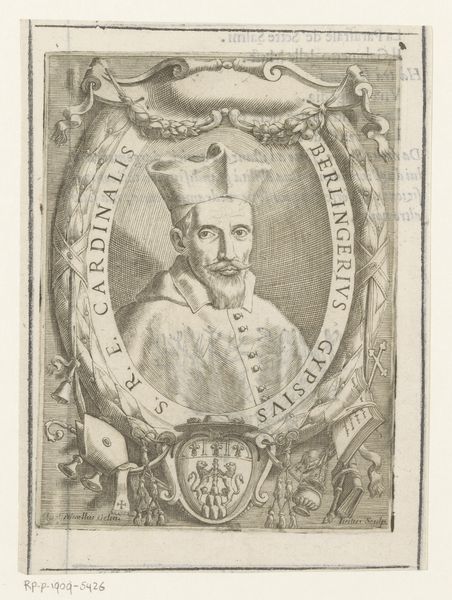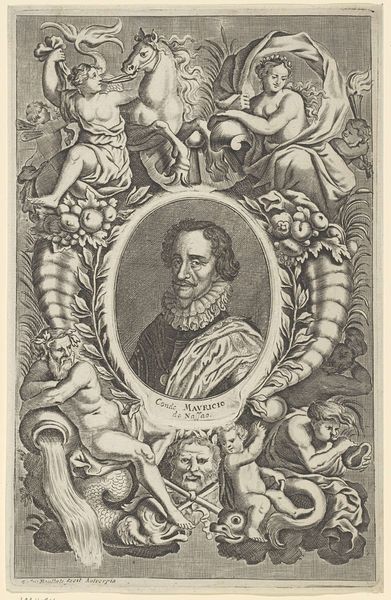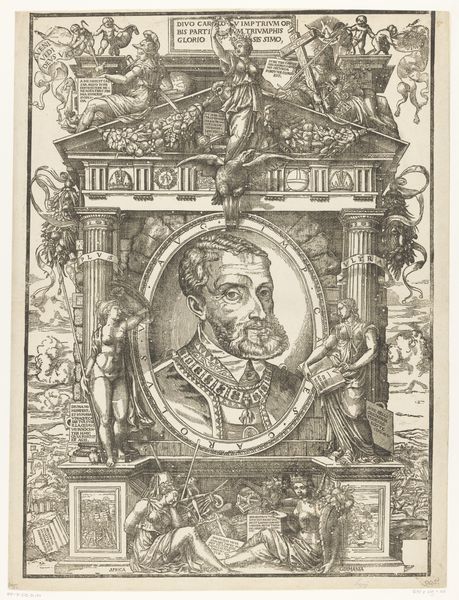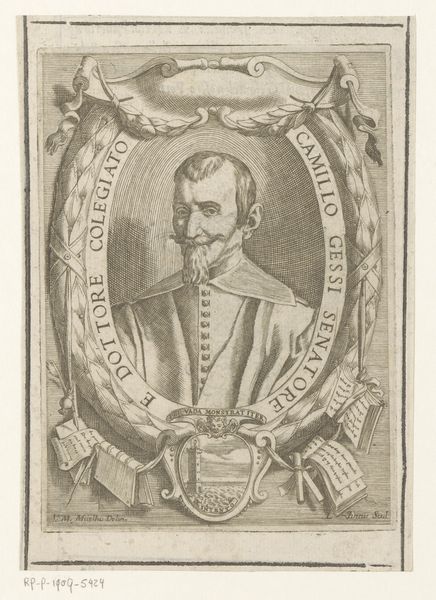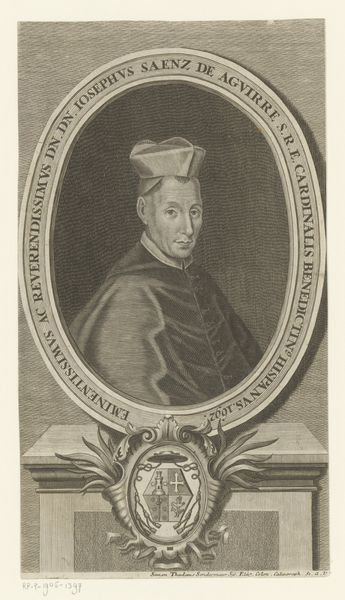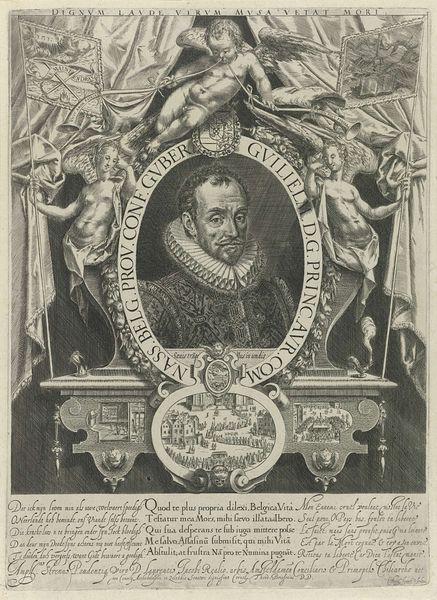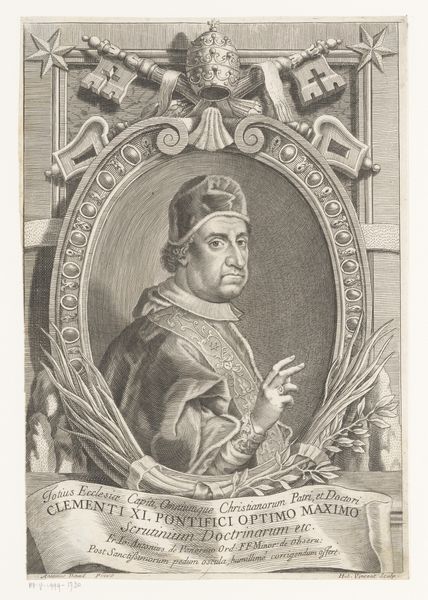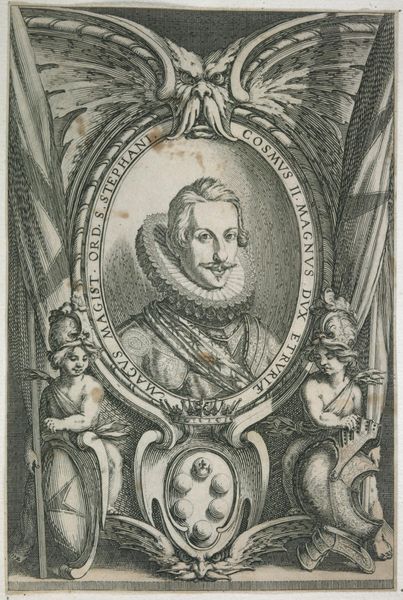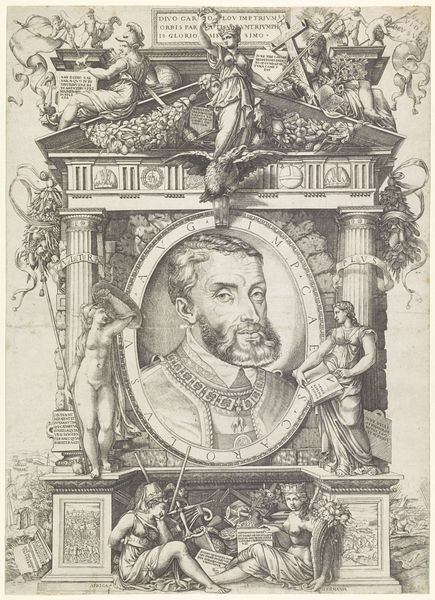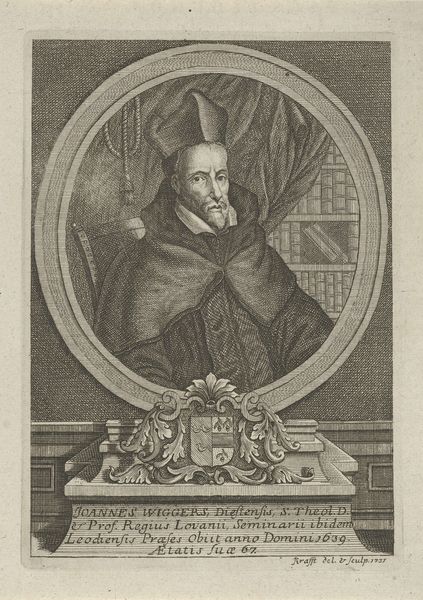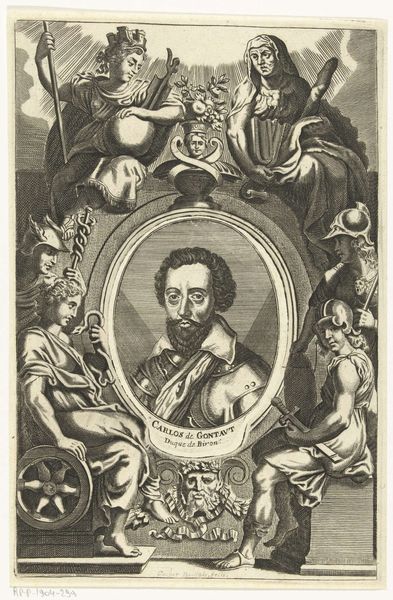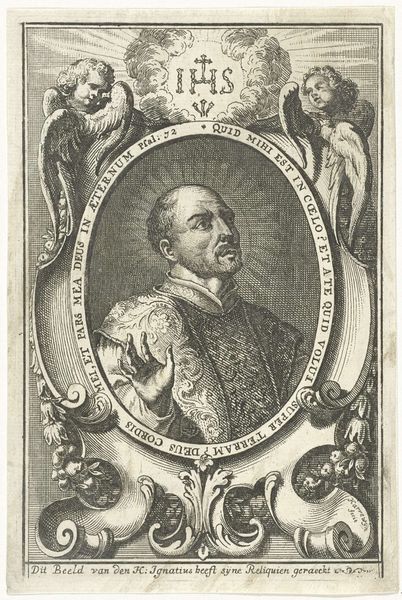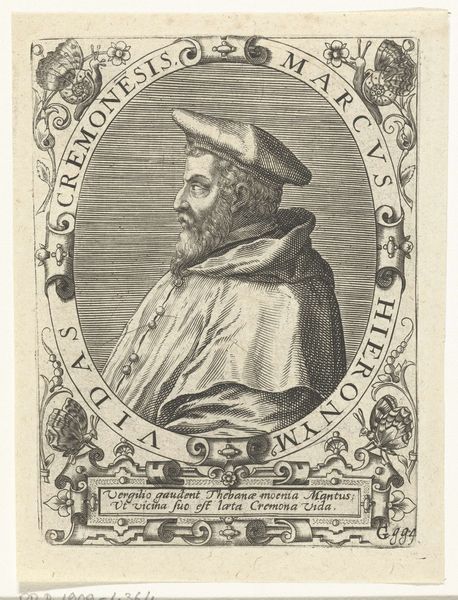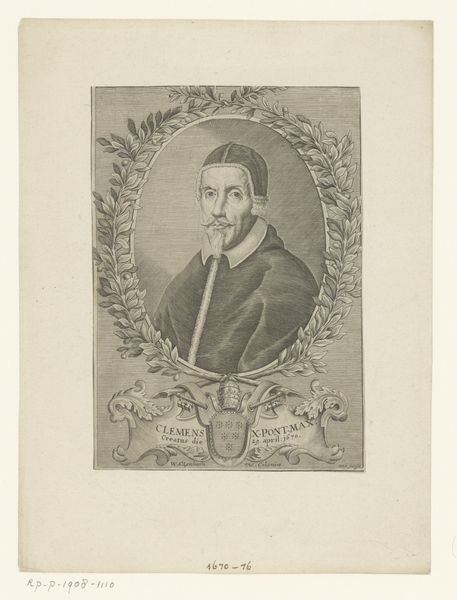
Dimensions: height 180 mm, width 120 mm
Copyright: Rijks Museum: Open Domain
Curator: Here we have Agostino Carracci’s “Portret van kardinaal Cinzio Aldobrandini,” created between 1567 and 1602. The artwork is an engraving, showcasing the talent of printmaking during that era. Editor: My immediate impression is one of intricate detail. The stark contrast of the lines against the paper creates a sense of formality, fitting for a cardinal’s portrait. It’s almost overwhelmingly symbolic, wouldn’t you say? Curator: Absolutely. The placement of Cardinal Aldobrandini’s likeness within this oval frame, surrounded by allegorical figures, directly communicates the Church's authority. It reminds us that art production during this time often served the purpose of reinforcing social hierarchies and promoting religious doctrine. Editor: Precisely. It's important to think about the economy of printmaking. These engravings allowed for a relatively inexpensive means to circulate Aldobrandini's image and, consequently, his influence far beyond his immediate sphere. I also note the swans and robed women framing the cardinal: those seem very symbolic. Curator: Good eye. Notice the two swans at the top flanking what appears to be divine figures? It really shows the careful crafting process that aimed to elevate the Cardinal's status by associating him with virtues and religious ideals. Editor: This gets me thinking: to whom was this image accessible, really? While engravings made imagery more widely available, surely the educated elite and those within the Church would have had prime access. How much did the "everyday" person engage with this kind of formal portraiture? Curator: A valid point. Though printed images had greater reach, their meanings were still primarily consumed within literate, hierarchical contexts. That the Cardinal would’ve needed to use imagery to sway his perception reveals an intersection of public relations, soft power, and image management, really. Editor: Considering that Carracci himself operated within the established art system, the choice of engraving feels purposeful, aligning with the socio-political objectives. It emphasizes how artistic choices—even down to the medium—are never neutral. Curator: Indeed. Studying Carracci's “Portret van kardinaal Cinzio Aldobrandini” invites a deeper appreciation of printmaking's role within institutional power structures and artistic practices of its time. Editor: And examining that power from the point of view of visual symbolism offers insights into the cultural landscape and its visual messaging system. A tiny peek, with lots of layers.
Comments
No comments
Be the first to comment and join the conversation on the ultimate creative platform.
